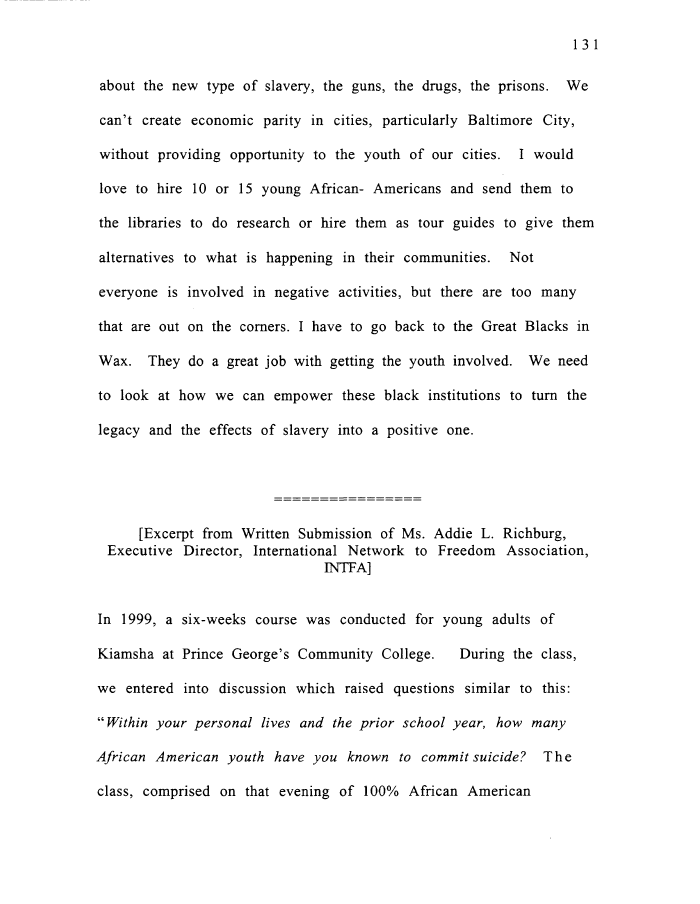 |
||||
|
TASK FORCE TO STUDY THE HISTORY AND LEGACY OF SLAVERY IN MARYLAND (Final Report) 1999/12/31 MdHR 991422 MdHR 991422, Image No: 140 Print image (39K) |
 |
||||
|
TASK FORCE TO STUDY THE HISTORY AND LEGACY OF SLAVERY IN MARYLAND (Final Report) 1999/12/31 MdHR 991422 MdHR 991422, Image No: 140 Print image (39K) |
| 131 about the new type of slavery, the guns, the drugs, the prisons. We can't create economic parity in cities, particularly Baltimore City, without providing opportunity to the youth of our cities. I would love to hire 10 or 15 young African- Americans and send them to the libraries to do research or hire them as tour guides to give them alternatives to what is happening in their communities. Not everyone is involved in negative activities, but there are too many that are out on the corners. I have to go back to the Great Blacks in Wax. They do a great job with getting the youth involved. We need to look at how we can empower these black institutions to turn the legacy and the effects of slavery into a positive one. [Excerpt from Written Submission of Ms. Addie L. Richburg, Executive Director, International Network to Freedom Association, INTFA] In 1999, a six-weeks course was conducted for young adults of Kiamsha at Prince George's Community College. During the class, we entered into discussion which raised questions similar to this: " Within your personal lives and the prior school year, how many African American youth have you known to commit suicide? The class, comprised on that evening of 100% African American |